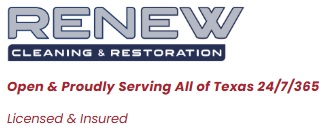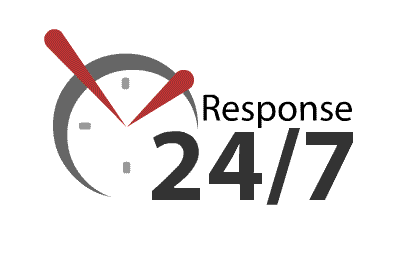Why the BSC Ecosystem Is a Game-Changer for Web3 and NFTs—and How You Can Ride the Wave
Okay, so check this out—when I first dipped my toes into the Binance Smart Chain (BSC) ecosystem, I thought it was just another Ethereum clone. Seriously? Another blockchain trying to snag some DeFi glory? But then… whoa, the speed and low fees hit differently. My gut said, “This could actually stick.”
Shortly after, I started noticing how BSC’s multi-chain approach wasn’t just talk. It’s real connectivity that makes Web3 apps and NFT projects more accessible for everyday users. And honestly, that’s something I didn’t expect at all. Yeah, Ethereum’s been the king for a while, but BSC’s ecosystem is quietly eating into that throne, especially with how it handles cross-chain assets and DeFi protocols.
Here’s the thing. The biggest hurdle for most folks diving into crypto isn’t the tech itself—it’s the complexity. Switching wallets, juggling gas fees, and trying to figure out where your NFTs actually live? It’s a mess. But BSC’s ecosystem, paired with smart wallet solutions, offers a much smoother ride. Not perfect, but way better.
And speaking of wallets—if you haven’t explored a solid multi-chain wallet that integrates BSC seamlessly, you’re missing out. I stumbled upon this binance wallet that supports multiple blockchains and honestly, it changed my workflow. No more jumping between apps or worrying about losing tokens in random chains. It’s pretty slick.
Really? Yep, it’s not foolproof, but for the average DeFi user or NFT collector, it’s a breath of fresh air.
Now, diving deeper—why does BSC feel so much snappier? Mostly because it trades off some decentralization to boost speed and slash fees. That’s a double-edged sword. On one hand, you get lightning-fast transactions at a fraction of the cost. On the other, some purists raise eyebrows about centralization risks. Hmm… I get that concern, but practically speaking, for most users, the benefits outweigh the drawbacks.
Another thing I noticed—NFT marketplaces on BSC are growing up fast, hosting collections that don’t get the same hype on Ethereum but have solid communities backing them. The barriers to entry are lower, so artists and collectors can experiment without bleeding money on gas.
On the tech front, BSC’s compatibility with the Ethereum Virtual Machine (EVM) means developers can port their dApps over with minimal tweaks. This ease of migration fuels a vibrant ecosystem. But here’s a catch: not all projects are equally decentralized or secure. You really gotta vet what you’re getting into.
Oh, and by the way, the way BSC supports Web3 wallets is pretty neat. It’s not just about storing tokens or NFTs; the wallets let you interact with DeFi protocols, stake assets, and even govern projects without leaving the app. So, it’s a whole new level of engagement.
Initially, I thought this all sounded too good to be true—could BSC really deliver on these promises long-term? Then I saw the community’s resilience and how quickly developers iterate. That shifted my perspective quite a bit.

Multi-Chain Wallets: The Unsung Heroes of BSC’s Rise
Okay, full disclosure: I’m biased toward wallets that make life easier, and multi-chain support is hands down a must-have now. Why? Because juggling multiple tokens across Binance Smart Chain, Ethereum, and other blockchains can get downright exhausting.
When I first tried out that binance multi-blockchain wallet, it felt like someone carried all my crypto bags for me. Suddenly, I could swap assets seamlessly, check my NFT collections from different chains in one place, and even connect to Web3 dApps without the usual headaches.
But here’s a weird thing—sometimes, syncing across chains isn’t instantaneous. There’s this lag I hadn’t expected, especially when switching between BSC and Ethereum assets. Not a dealbreaker, but definitely something to keep in mind.
Also, security-wise, multi-chain wallets open up a bigger attack surface. I’m not saying avoid them, but be very cautious which wallet you trust with your keys. Personally, I stick to options with strong community backing and regular audits, and yeah, I keep my fingers crossed every now and then.
What bugs me though is the user experience inconsistency across DeFi apps on BSC. Some are silky smooth, others… well, they feel unfinished. It’s like the ecosystem is growing so fast that quality control is playing catch-up. Hopefully, more standardized wallet integrations like with binance will help smooth out those wrinkles.
On the NFT front, BSC wallets are becoming more than just storage—they’re evolving into hubs where you can showcase, trade, and even stake your NFTs for rewards. That’s a pretty cool fusion of art and finance, though I’m not 100% sold on how sustainable that is just yet.
Anyway, the big takeaway here is that if you’re dabbling in DeFi or collecting NFTs on BSC, having a reliable multi-chain wallet is no longer optional. It’s your gateway to the full potential of the ecosystem without getting lost in the weeds.
Web3 Connectivity: Why It Matters More Than Ever
Here’s what really fascinates me about BSC: its growing Web3 connectivity. You see, Web3 is more than just a buzzword—it’s the promise of decentralized applications that actually work for everyday people. And that means seamless wallet integration, cross-chain interactions, and real usability.
In many ways, BSC nails this better than some older blockchains because it’s designed with user experience as a priority. The dev teams seem to really get that if Web3 is gonna go mainstream, it can’t be a pain to use. That’s why you see wallets like binance pushing multi-blockchain support alongside simple Web3 dApp access.
Though, I’ll admit, the ecosystem still has gaps. Sometimes the Web3 apps require manual contract approvals that feel outdated or risky. On one hand, that’s good for security, but on the other, it scares away newcomers who just want to explore NFTs or swap tokens.
Still, the momentum is undeniable. DeFi protocols on BSC are experimenting with new governance models and liquidity incentives that feel genuinely community-driven. That’s a refreshing change from some centralized platforms that call themselves “Web3” but don’t really decentralize power.
And remember—Web3 isn’t just about finance. BSC is fostering projects in gaming, social media, and data privacy that leverage blockchain’s transparency and security. It’s early days, but the potential is huge.
Something felt off about the hype cycle for Web3 in general—the tech promises freedom, but adoption often depends on convenience. BSC’s pragmatic approach seems to balance those two, though it’s definitely not perfect and faces challenges around decentralization and censorship resistance.
But hey, that’s the tradeoff we’re living with, at least for now.
The NFT Landscape on BSC: More Than Just Cheap Minting
When you think NFTs, Ethereum usually comes to mind first. But BSC’s NFT scene is quietly thriving, offering a different flavor that’s worth exploring. The low transaction fees mean artists can mint and sell without worrying about exorbitant gas prices, which opens the door for more diverse creators.
Check this out—some BSC NFT projects focus heavily on utility, like integrating NFTs into DeFi staking or using them as access passes for exclusive content. It’s not just digital art for art’s sake.
And the community vibe is distinctly grassroots. Unlike some hyped-up Ethereum collections, many BSC NFT projects are community-driven, with active Discords and real conversations happening. That’s something I appreciate because it feels less like a speculative bubble and more like a genuine cultural movement.
That said, the flip side is quality control—or the lack thereof. Because it’s easier to launch NFTs on BSC, there’s a flood of low-effort projects and scams mixed in. So if you’re diving in, do your homework and maybe lean into wallets that offer good tracking and security features, like the binance multi-chain wallet I mentioned earlier.
Honestly, the NFT market here is still figuring itself out. I’m excited by the innovation but cautious about the hype. It’s a wild frontier, and that’s exactly why it’s interesting.
To wrap my head around it all, I keep reminding myself: blockchain ecosystems aren’t static. They evolve with their communities, tech upgrades, and regulatory landscapes. BSC’s current strengths might shift, but the multi-chain and Web3-friendly approach will likely keep it relevant.
So yeah, if you’re active in DeFi, NFT collecting, or just want to explore Web3 without burning through your wallet on fees, BSC and a reliable multi-chain wallet like binance should definitely be on your radar.
And if you ask me, that’s a pretty exciting place to be right now.




